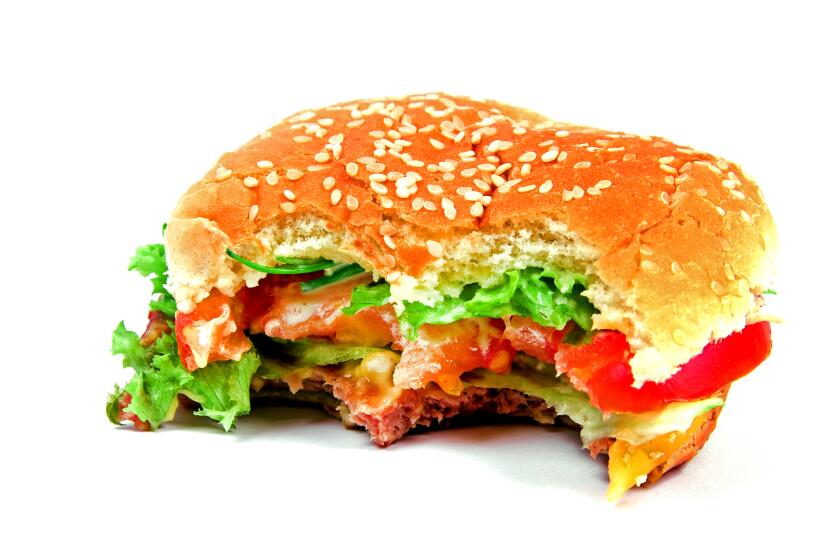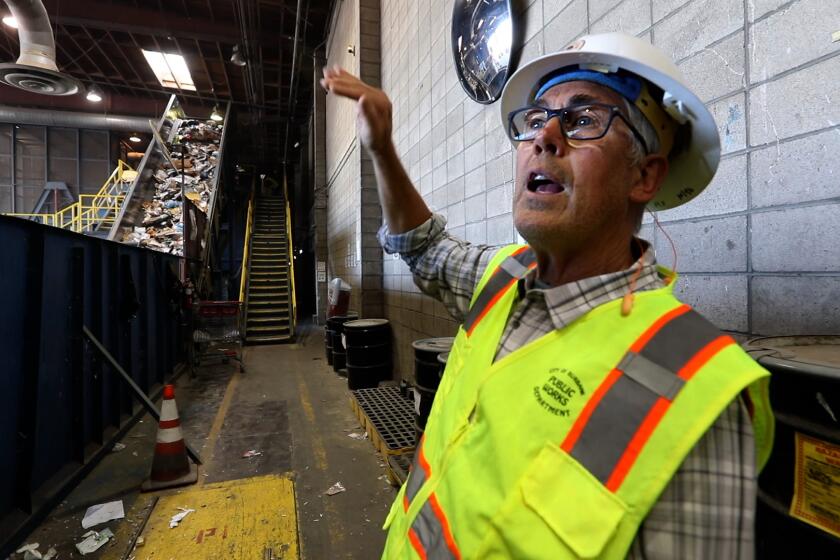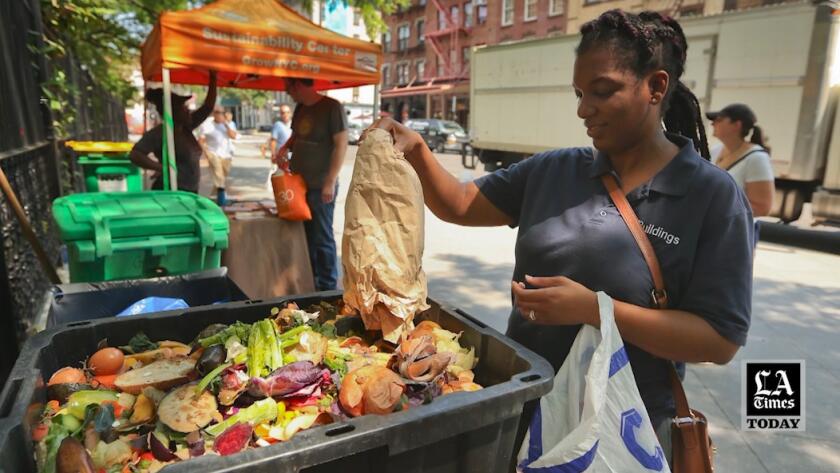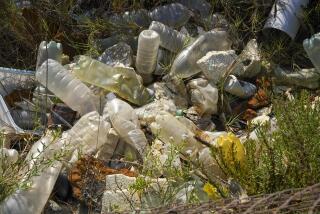California goes to war with food waste. Composting is its next climate crusade
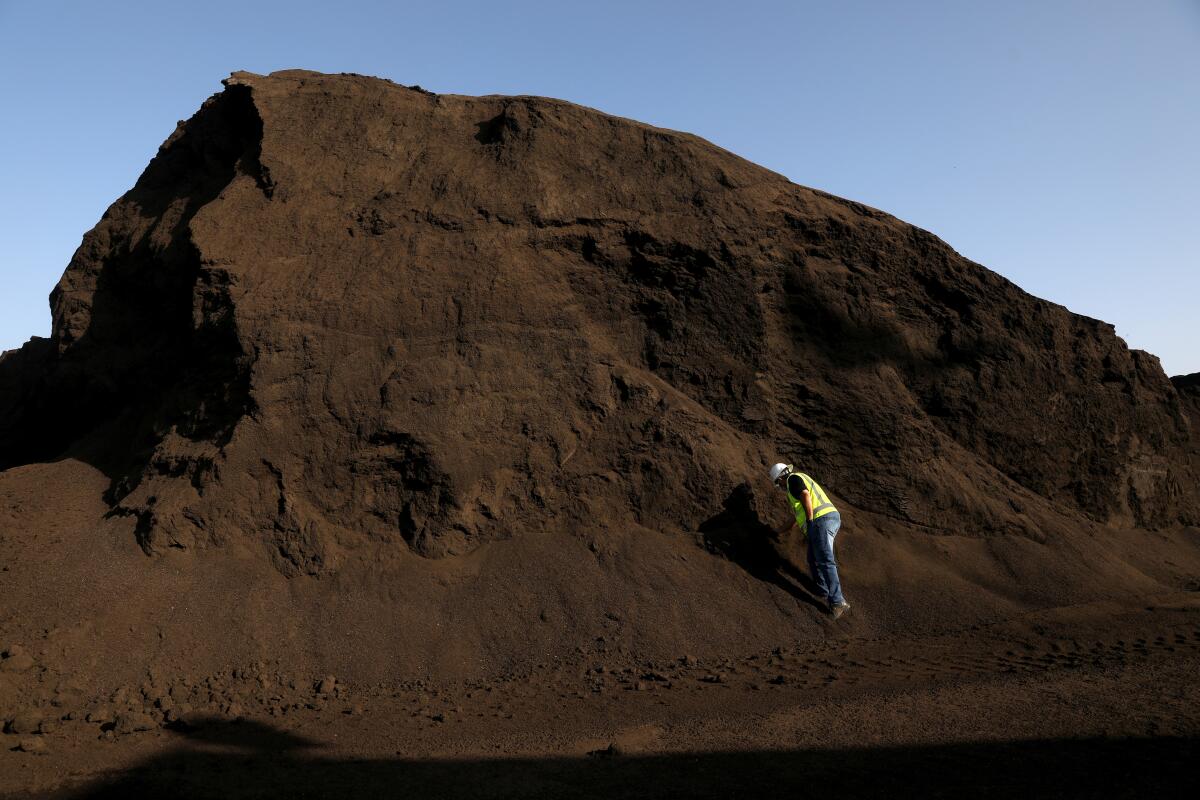
- Share via
Trash never dies. Sometimes it’s not even trash.
That’s the notion behind a state law that on Jan. 1 will require Californians to separate organic material from their other garbage. It’s a landmark reform that aims to transform the state’s throwaway culture — not just to ease pressure on landfills but to reduce the climate-warming fallout of our trashy norm.
Senate Bill 1383 mandates that Californians toss unused food, coffee grounds, egg shells, banana peels and other leftovers into bins they use for other “green” waste, such as garden trimmings, lawn clippings and leaves.
Waste haulers will divert the organic material away from traditional landfills to facilities that will turn the biological mishmash into products such as compost, mulch and natural gas.
In future years, individuals and businesses that don’t adequately separate their green waste can face fines of up to $500 daily. Cities that don’t comply could be forced to pay as much as $10,000 a day per violation.
The state Legislature and then-Gov. Jerry Brown passed the law in 2016, seeking many benefits: reducing the flow of refuse to overburdened landfills and returning organics to the land, thereby improving soil quality, enhancing drought resistance, bolstering crops and, especially, reducing climate-warming gases.
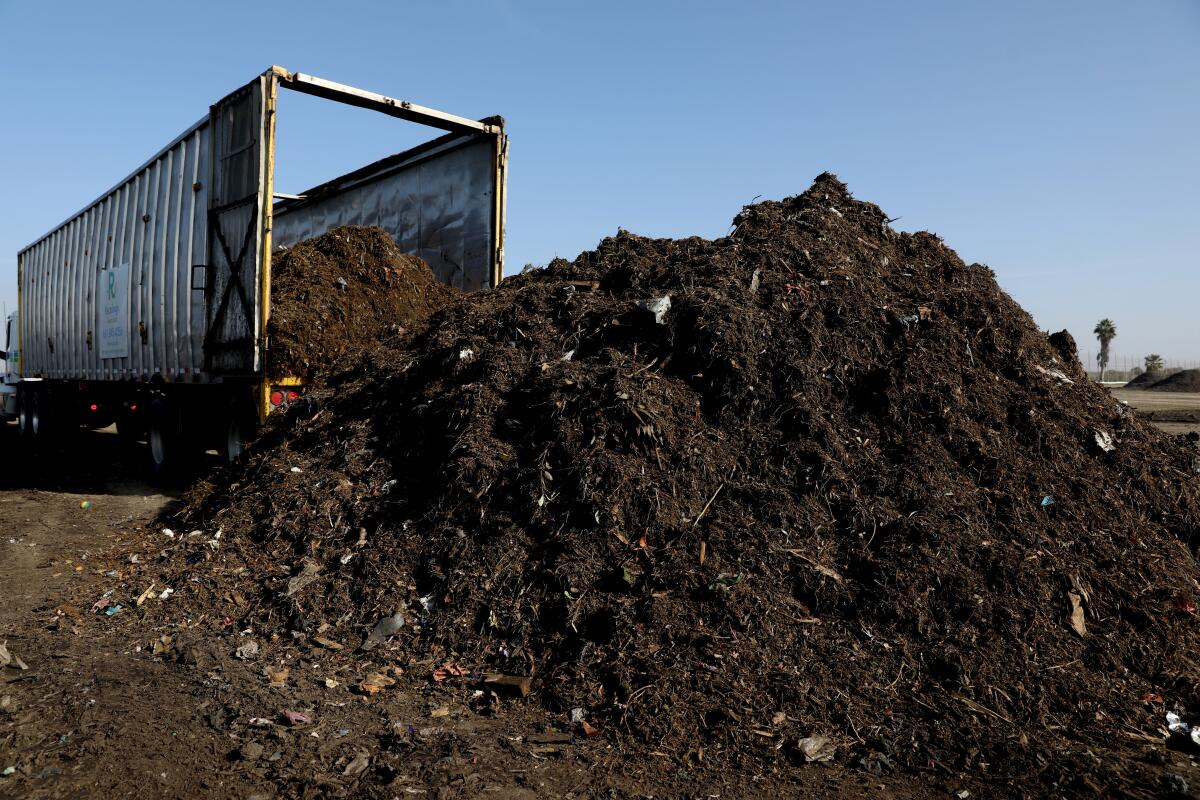
The age-old practice of dumping backyard detritus and kitchen waste into landfills produces methane, a super-pollutant as much as 80 times more toxic than carbon dioxide and a potent — though not long-lasting — greenhouse gas. Its rapid dispersal into the atmosphere makes it particularly harmful, and it runs counter to the state’s ambitions for tamping down global warming.
The new regimen represents the most dramatic shift in California’s solid waste policy since the introduction of curbside recycling in the 1990s. The new law also requires supermarkets and other big food providers to divert as much as a quarter of edible food now destined for dumps to food banks to feed the needy. And it mandates that cities buy products such as mulch and compost, thereby creating new markets for the byproducts made from organic waste.
“What we are really talking about is not the waste stream, but the recycled stream,” said agronomist Bob Shaffer, a composting authority and advisor to organic farmers. “We are pleading with the public, ‘We need recycled food, to help with greening the land around us, to work on our atmospheric challenges, to provide a natural solution for soil health.’ ”
More fundamental change could be coming to the state’s waste stream next year, when voters will consider a ballot measure that would require plastic manufacturers to ensure their products are recyclable or reusable. The hope is to sharply reduce the amount of plastic that ends up in landfills or nature, particularly the ocean.
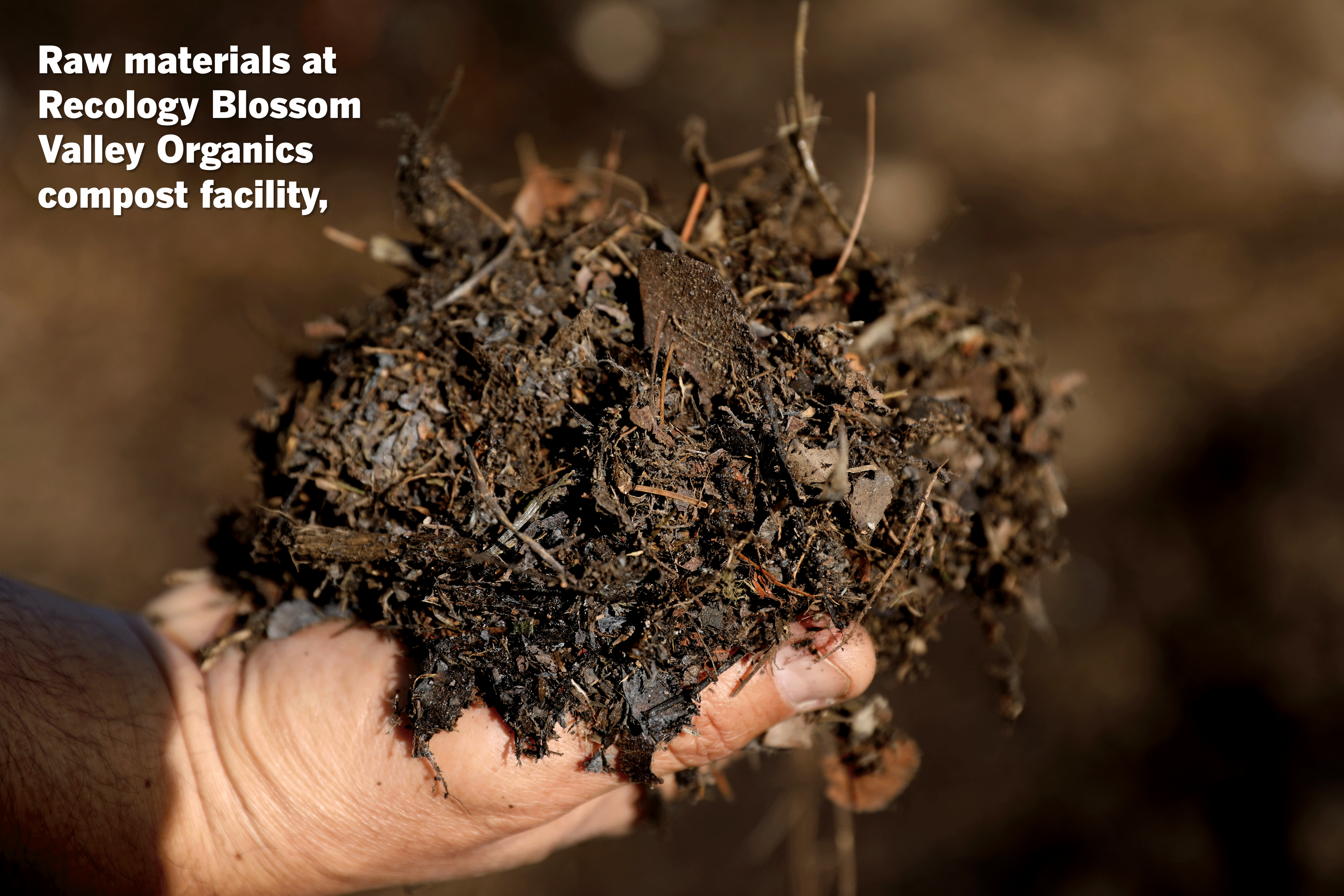
Still, more than half of the trash produced by Californians is organic material, especially kitchen scraps and garden waste, according to CalRecycle, the state agency spearheading the transition. The goal of the new state law is to reprocess 75% of the green waste by 2025. That means redirecting 17.7 million tons of organic material away from disposal, equivalent to the weight of more than 9.5 million cars.
The massive shift of green waste will require dozens of major public works improvements and the reeducation of residents and business people, to understand that most of what was once considered trash can be put to secondary uses.
Not all of the organics will be trucked away. Some food will be washed down garbage disposals and into the sewer system, where it will turn into methane and, in turn, potentially be recaptured and burned as fuel. A small fraction will be composted by homeowners or at community composting centers for reuse closer to the source. (Many environmentalists prefer this option because it doesn’t require the use of pollution-spewing trucks to deliver green refuse to distant composting facilities.)
But most Californians probably will be too busy or distracted to reprocess their own green waste. They’ll depend on garbage companies to haul the leftovers away. And those haulers will need places to deposit the material, requiring the construction of anywhere from 50 to 150 large compost or anaerobic digestion centers, said Neil Edgar, executive director of the California Compost Coalition, a trade group that includes waste hauling companies.
Anaerobic digestion is a process that uses bacteria to break down the organic matter. When completed in sealed containers, the resulting gas can be harvested for fuel. Los Angeles County alone projects it could need a dozen anaerobic digestion plants, costing $840 million, to process 1.9 million tons of food waste a year.
“The work that’s needed is very deep and very wide,” Edgar said. “It’s monumental in scope.”

The new normal will mean more composting centers such as Blossom Valley Organics South, a 485-acre facility at the south end of the Central Valley, operated by the waste company Recology.
As many as 600 semi trucks will one day travel as far as 100 miles, sometimes more, from Los Angeles and other locales to dump as much as 3,750 tons of discarded food and yard waste daily at the composting center, not far from where State Route 99 and Interstate 5 split.
Massive conveyor belts and spinners shake the organics into continually smaller pieces, sifting out as much plastic, paper, branches and other contaminants as possible. The biodegradables then go into giant mounds, as much as 400 yards long and a dozen feet high.
It takes up to four months for microorganisms to break down the waste. Giant tilling machines turn the “windrows” to keep them oxygenated, as the 135-degree piles release clouds of steam. Gypsum, rice hulls, redwood dust and other amendments can be added to transform the heaps into finished compost.
Scientists have found that this kind of reconditioning of biological matter produces far less Earth-warming methane and carbon dioxide than landfilling. The atmospheric benefit is compounded when farmers put the compost onto their fields, often to feed “cover crops” such as mustard that help sink carbon back into the Earth.
The world wastes more than 1 billion tons of food every year, according to the U.N. That’s 17% of total food available to consumers.
“It’s like a no-brainer,” said Kate M. Scow, a soil scientist at UC Davis, who has measured how compost helps remove greenhouse gases from the atmosphere. “You can’t build carbon in the soil unless you feed carbon in. ... It’s a way of closing the loop.”
Whendee L. Silver, an ecosystem ecologist at UC Berkeley, has estimated that applying an inch of compost to just 5% of California’s rangelands would suck enough carbon out of the atmosphere to equal pulling 6 million cars off the road.
Silver emphasizes the importance of regular citizens participating, alleviating the helplessness many have felt in trying to confront the climate threat. “I want people to know that simple changes in their everyday activities (such as putting food, paper, and green waste in a green compost bin instead of a landfill bin) can contribute to slowing climate change,” Silver told a UC publication.
Some cities have been recycling their green waste for years. San Francisco blazed the trail in 1996 when it turned excess food from the city’s wholesale produce market into compost. By 2009, the city required all residents and businesses to place their food scraps in curbside green bins.
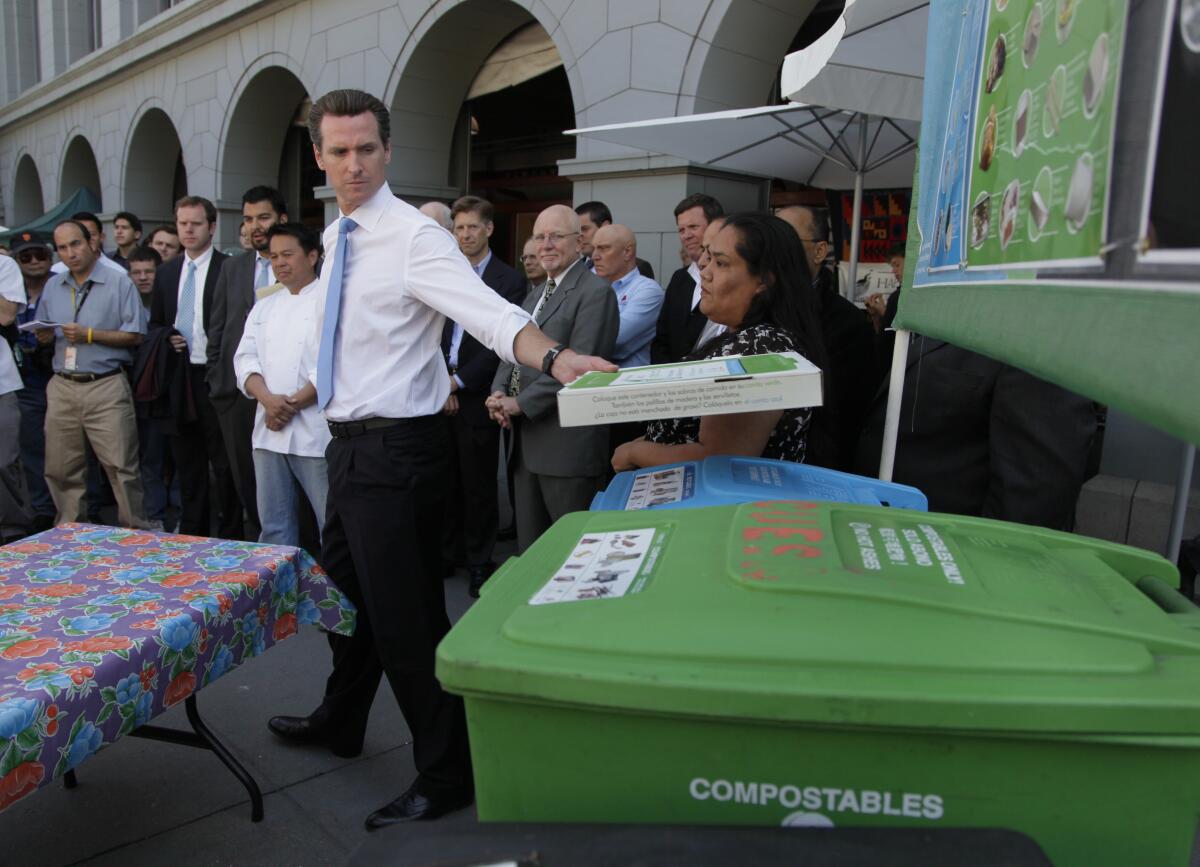
The city now urges residents to compost just about anything from their kitchens: tea bags, vegetable peels, stale bread, nut shells, fruit pits and all manner of leftovers: steak bones, crab and oyster shells, salad dressings, pasta, vegetable oil, jam and cooked meats.
San Franciscans have become inveterate composters, with trucks now shipping up to 550 tons a day of yard and kitchen extras to a compost center near the Central Valley city of Tracy. San Francisco also recycles nearly that tonnage in cans, bottles and plastic, meaning the city now reprocesses nearly twice as much material as the 600 tons of trash that it landfills daily.
“When we put our banana peels, egg shells, and coffee grounds in a kitchen compost pail in San Francisco, it ends up in a vineyard or a farm that then becomes a carbon sink,” said Robert Reed, a Recology spokesman with an evangelical fervor for recycling.
The city has ambitious plans to go even further, with Mayor London Breed announcing Wednesday that it plans to cut landfill dumping an additional 50% (from 2015 levels) by 2030. That will require deeper behavioral changes, such as less wasteful buying of food and the reuse of wood and other building materials.
Most cities, particularly in Southern California, lag considerably behind San Francisco. SB 1383 requires them to pass ordinances by the end of the year adopting the state’s alternative waste goals. That, in turn, will require renegotiating contracts with private waste-hauling contractors and sometimes force the purchase of new bins and trucks for green waste.
Facilitating the collection of food scraps, Los Angeles and other cities have begun pilot programs to provide customers with kitchen pails.
“In some places, they have a back order to get the containers the organic waste goes into,” said Joanna Gin, a lawyer with Best Best & Krieger, who is helping cities navigate the new rules. “Some of them don’t anticipate getting the containers before the Jan. 1 deadline.”
California’s recycling industry has struggled since China banned imports of plastics and other material. Experts say changes are vital to overcome a waste glut.
CalRecycle suggests that many cities and counties will be able to put organic recycling in place with waste collection fee increases of 5% or less. In a survey, most cities said they expect to raise rates between 1% and 20%, with about one-fifth of cities predicting rates will jump even more.
The complications don’t stop there. Some cities fret, in particular, over the requirement that they buy back organic waste byproducts. A formula based on population dictates, for instance, that a city of 100,000 purchase 8,000 tons of mulch a year, or the equivalent in compost or reclaimed natural gas, said Gin.
Oceanside is already giving away compost to 1,000 residents, but that only gets the city one-third of the way to the amount of the reclaimed products it will be ordered to buy each year. “At the end of the day, there is only so much compost you can put on the ground,” said Colleen Foster, the city’s environmental officer. “We’re going to have to find a place to store the rest.”
CalRecycle notes that local governments have other procurement options, such as using biofuel to power buses or clean energy to heat public buildings.
Cities scrambling to meet all of the law’s requirements — and facing fines of up to $10,000 a day for failing to do so — raised an outcry. That led the Legislature and Gov. Gavin Newsom to approve a stop-gap measure earlier this year, allowing cities to take until 2023 to come into compliance, if they file an action plan by March.
CalRecycle has signaled that it wants to promote voluntary cooperation and avoid fines, though it will have the power to go after laggards on Jan. 1. Those cities, in turn, can fine residents who fail to separate their green waste from their other trash, starting on Jan. 1, 2024. That will mean waste haulers or code enforcement officers peeping into trash bins to make sure green waste, recyclables and trash are kept separate. If they’re not, the penalties can range from $50 to $100 for a first offense and increase up to $500 for third and subsequent failures.
Californians will pay a price if they confuse trash you can use with trash you should lose.

“We are at this very pivotal point in waste management, for a couple reasons,” said Nick Lapis, advocacy director for the environmental group Californians Against Waste. “One is that for the first time we are tackling organic waste. And that happens just as public awareness and attention to plastic pollution is peaking. So these two massive shifts in how we think about waste are happening at the same time.”
Times staff writer Jaclyn Cosgrove contributed to this report.
- Share via
Watch L.A. Times Today at 7 p.m. on Spectrum News 1 on Channel 1 or live stream on the Spectrum News App. Palos Verdes Peninsula and Orange County viewers can watch on Cox Systems on channel 99.
More to Read
Sign up for Essential California
The most important California stories and recommendations in your inbox every morning.
You may occasionally receive promotional content from the Los Angeles Times.

